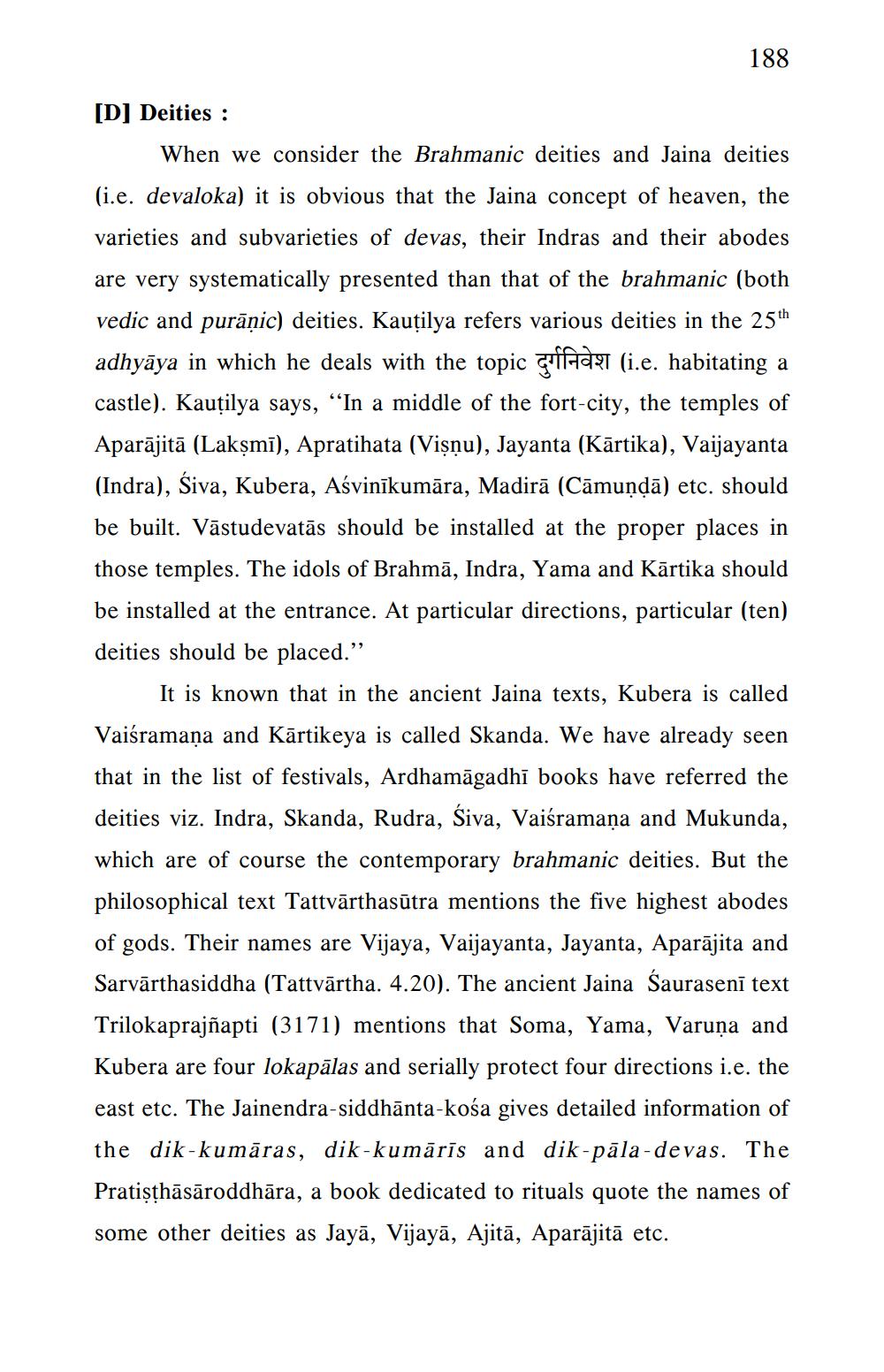________________
188
[D] Deities :
When we consider the Brahmanic deities and Jaina deities (i.e. devaloka) it is obvious that the Jaina concept of heaven, the varieties and subvarieties of devas, their Indras and their abodes are very systematically presented than that of the brahmanic (both vedic and purāņic) deities. Kautilya refers various deities in the 25th adhyāya in which he deals with the topic ' 91 (i.e. habitating a castle). Kautilya says, “In a middle of the fort-city, the temples of Aparājitā (Lakşmī), Apratihata (Visnu), Jayanta (Kārtika), Vaijayanta (Indra), Siva, Kubera, Asvinīkumāra, Madirā (Cāmundā) etc. should be built. Vāstudevatās should be installed at the proper places in those temples. The idols of Brahmā, Indra, Yama and Kārtika should be installed at the entrance. At particular directions, particular (ten) deities should be placed.”
It is known that in the ancient Jaina texts, Kubera is called Vaiśramaņa and Kārtikeya is called Skanda. We have already seen that in the list of festivals, Ardhamāgadhī books have referred the deities viz. Indra, Skanda, Rudra, Siva, Vaiśramaņa and Mukunda, which are of course the contemporary brahmanic deities. But the philosophical text Tattvārthasūtra mentions the five highest abodes of gods. Their names are Vijaya, Vaijayanta, Jayanta, Aparājita and Sarvārthasiddha (Tattvārtha. 4.20). The ancient Jaina Saurasenī text Trilokaprajñapti (3171) mentions that Soma, Yama, Varuna and Kubera are four lokapālas and serially protect four directions i.e. the east etc. The Jainendra-siddhānta-kośa gives detailed information of the dik-kumāras, dik-kumārīs and dik-pāla-devas. The Pratisthāsāroddhāra, a book dedicated to rituals quote the names of some other deities as Jayā, Vijayā, Ajitā, Aparājitā etc.




